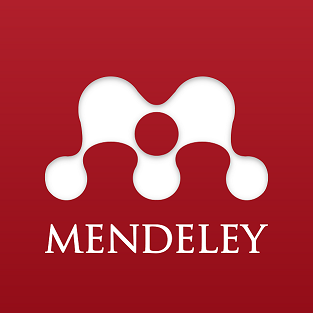BOOSTING ENGLISH WRITING SKILLS: HOW GINGER SOFTWARE EMPOWERS LANGUAGE LEARNERS
DOI:
https://doi.org/10.56874/jeel.v6i1.2207Keywords:
English writing skills, Ginger Software, language learning tools, systematic review, technology integrationAbstract
Writing skills are essential for learners in mastering English as a global language. Non-native learners face challenges such as grammatical errors, limited vocabulary, and lack of confidence, making technological solutions like Ginger Software highly relevant. This study employed a Systematic Literature Review (SLR) to analyze the effectiveness of Ginger Software in enhancing English writing skills. The research synthesizes findings from various studies published between 2015 and 2025, highlighting Ginger’s ability to improve grammar, vocabulary, and sentence structure through real-time feedback and context-based learning. Results indicate that Ginger Software significantly enhances writing quality, supports self-directed learning, and increases learners' motivation. However, challenges such as accessibility limitations, integration into workflows, and over-reliance on technology were also identified. While Ginger Software proves beneficial for addressing common writing errors, its limitations in providing nuanced, contextualized feedback emphasize the continued importance of educators in the learning process. This study concludes that combining AI-based tools like Ginger Software with traditional teaching methods can provide a balanced and comprehensive approach to improving English writing skills. Future research should explore strategies for greater inclusivity and the development of hybrid models integrating AI technologies with human instruction.
References
Abdul, R., Ajleaa, N., Zulkornain, L. H., & Hamzah, N. H. (2022). Exploring Artificial Intelligence using Automated Writing Evaluation for Writing Skills. Environment-Behaviour Proceedings Journal, 7(SI9), 547–553. https://doi.org/10.21834/ebpj.v7isi9.4304
Al Badi, A. A., Osman, M. E. T., & M. Al-Mekhlafi, A. (2020). The Impact of Virtual Writing Tutor on Writing Skills and Attitudes of Omani College Students. Journal of Education and Development, 4(3), 101. https://doi.org/10.20849/jed.v4i3.828
Arisandy, D., Marzal, J., & Maison, M. (2021). Pengembangan Game Edukasi Menggunakan Software Construct 2 Berbantuan Phet Simulation Berorientasi pada Kemampuan Berpikir Kreatif Siswa. Jurnal Cendekia : Jurnal Pendidikan Matematika, 5(3), 3038–3052. https://doi.org/10.31004/cendekia.v5i3.993
Beltrán, R. C., & Echitchi, R. (2022). Improving lexical errors in EFL writing by using software-mediated corrective feedback. Porta Linguarum, 2022(37), 275–290. https://doi.org/10.30827/portalin.vi37.20847
Berliani, D., Malik, A., Amrullah, K., Kholil, A., Arab, P. B., Maulana, U. I. N., & Ibrahim, M. (2024). Metode Mimicry Memorization dalam Pembelajaran Keterampilan Berbicara. Journal of Education Research, 5(4), 6787–6796. https://doi.org/10.37985/jer.v5i4.1992
Defianty, M., Zulfa, S., Mulyati, Y. F., & Info, A. (2024). EMBEDDING AUTOMATED WRITING EVALUATION IN. NOBEL: Journal of Literature and Language Teaching, 15(2), 155–170. https://doi.org/10.15642/NOBEL.2024.15.2.155-170
Fadhilah, N., Wahyuni, F., Yusuf, K., Nurcahyani, I. D., & Rahmaniar MB, A. (2023). Hubungan Pengetahuan Gizi dan Intensitas Penggunaan Gadget Terhadap Pola Makan Siswi. J-KESMAS: Jurnal Kesehatan Masyarakat, 9(2), 129. https://doi.org/10.35329/jkesmas.v9i2.4820
Gotti, M. (2017). ENGLISH AS A LINGUA FRANCA IN THE ACADEMIC WORLD: TRENDS AND DILEMMAS. Lingue e Linguaggi, 24, 47–72. https://doi.org/10.1285/i22390359v24p47
Hulu, Y. (2023). Problematika Guru Dalam Pengembangan Teknologi dan Media Pembelajaran. ANTHOR: Education and Learning Journal, 2(6), 840–846. https://doi.org/10.31004/anthor.v2i6.285
Ilham, I. (2022). Implementing Project-Based Learning for Efl Students’ Writing Achievement At Tertiary Level. English Review: Journal of English Education, 10(3), 1003–1012. https://doi.org/10.25134/erjee.v10i3.6470
Ilham, I. (2023). Need Analysis for Developing Paragraph Writing Materials Based on Problem-Based Learning Model for Indonesian Efl Learners. English Review: Journal of English Education, 11(3), 833–842. https://doi.org/10.25134/erjee.v11i3.8326
Ilham, I. (2024). Needs Analysis of Project-Based Learning Model in Writing Paragraphs from EFL Students’ Perspectives. Journal of Languages and Language Teaching, 12(1), 282. https://doi.org/10.33394/jollt.v12i1.9215
Ilham, I., Musthafa, B., & Yusuf, F. N. (2020). University Students Needs of Writing Course Materials: a Case of Indonesia. English Review: Journal of English Education, 8(2), 31. https://doi.org/10.25134/erjee.v8i2.2988
Ilham, Irwandi, Ayun, Z. Q., & Wida, S. (2025). Project-based learning model with blended learning in academic writing : A need analysis. JOLLT Journal of Languages and Language Teaching, 13(1), 306–317. https://doi.org/10.33394/jollt.v13i1.12552
Khasawneh, M. (2024). Study on the effectiveness of speech-to-text technology in supporting writing skills among special education students in Saudi Arabia. Journal of Infrastructure, Policy and Development, 8(6). https://doi.org/10.24294/jipd.v8i6.4611
L.A. Yuningsih. (2021). Efektivitas Pemanfaatan Whatsapp Dalam Pembelajaran Keterampilan Menulis Teks Deskripsi. Jurnal Pendidikan Dan Pembelajaran Bahasa Indonesia, 10(2), 237–244. https://doi.org/10.23887/jurnal_bahasa.v10i2.713
Li, Q. (2022). An English Writing Grammar Error Correction Technology Based on Similarity Algorithm. Security and Communication Networks, 2022. https://doi.org/10.1155/2022/3690789
Lira, B., Rogers, T., Goldstein, D. G., Ungar, L., & Duckworth, A. L. (2025). Learning from examples: AI assistance can enhance rather than hinder skill development. https://doi.org/10.48550/arXiv.2502.02880
Marliyanda, A., Wachyudi, K., & Kartini, D. (2022). Analisis Survei Terhadap Pengguna Grammarly. Jurnal Educatio FKIP UNMA, 8(3), 1147–1152. https://doi.org/10.31949/educatio.v8i3.3171
Mashauri, M. M., Pato, M., & Makuru, L. (2024). Developing Students’ Competences in the Era of Technology: Experience of Integrating Writing in a Content Course at Christian Bilingual University of Congo. Journal of Education and Practice, 8(4), 11–19. https://doi.org/10.47941/jep.2018
Monita, L., & Prasetyo, A. (2021). Studi Meta-Analisis Metode Total Physical Response (TPR) dalam Pembelajaran Bahasa Inggris. JEdu: Journal of English Education, 1(1), 19–27. https://doi.org/10.30998/jedu.v1i1.4412
Muhamad, D. (2022). Keefektifan Teknik Substitusi Numerik dalam Pembelajaran Keterampilan Menulis Paragraf Prosedur The Effectiveness of Numerical Substitution Techniques in Learning to Write Procedure Paragraph. Jurnal Pembelajaran Bahasa Dan Sastra, 1(1), 85–92. https://doi.org/10.55909/jpbs.v1i1.15
Nasrullah, M., Angresti, N. D., Suryawan, S. H., & Faizal Mahananto. (2021). Requirement Engineering terhadap Virtual Team pada Proyek Software Engineering. Journal of Advances in Information and Industrial Technology, 3(1), 1–10. https://doi.org/10.52435/jaiit.v3i1.79
Nurbayanni, A., Ratnika, D., Waspada, I., & Dahlan, D. (2023). Pemanfaatan Media Dan Teknologi Di Lingkungan Belajar Abad 21. Jurnal Sosial Humaniora Sigli, 6(1), 183–189. https://doi.org/10.47647/jsh.v6i1.1499
Okoli, C., & Schabram, K. (2015). A Guide to Conducting a Systematic Literature Review of Information Systems Research. SSRN Electronic Journal, 10(2015). https://doi.org/10.2139/ssrn.1954824
Parida, M., & Sinha, M. (2021). Pandemic and disability: Challenges faced and role of technology. Technology and Disability, 33(4), 245–252. https://doi.org/10.3233/TAD-200311
Ramamuthie, V., & Abdul Aziz, A. (2022). Systematic Review: The Effectiveness of Digital Tools to Improve Writing Skill of ESL Students. International Journal of Academic Research in Business and Social Sciences, 12(3), 408–427. https://doi.org/10.6007/ijarbss/v12-i3/12897
Restika, I., Hanim, I., & Lastari, D. S. (2021). the Effect of Ginger Software on the Tenth Grade Students’ Writing Skill. Globish: An English-Indonesian Journal for English, Education, and Culture, 10(2), 12. https://doi.org/10.31000/globish.v10i2.4635
Rohmatika, A., Arianto, P., & Putra, R. (2020). STUDI PENGGUNAAN APLIKASI PADLET PADA KELAS MENULIS. Nivedana : Jurnal Komunikasi & Bahasa, 2507(February), 1–9. https://doi.org/10.53565/nivedana.v1i2.222
Sa’diyah, I. (2022). Kesalahan berbahasa Indonesia tulis pada aspek ejaan, morfologi, dan sintaksis oleh peserta pelatihan menulis Lembaga Pengelola Dana Pendidikan (LPDP). KEMBARA Journal of Scientific Language Literature and Teaching, 8(2), 255–271. https://doi.org/10.22219/kembara.v8i2.22282
Sulistyowati, E. (2021). Penerapan Grammarly Tool Untuk Meningkatkan Keterampilan Menulis Teks Analisis Ekspositoris Siswa. Jurnal Educatio FKIP UNMA, 7(2), 559–566. https://doi.org/10.31949/educatio.v7i2.1144
Sunarti, S. (2024). Transformasi pembelajaran digital dengan artificial. Jurnal Perspektif, 17(1), 85–96. https://doi.org/10.53746/perspektif.v17i1.171
Ummah, M. S. (2019). No 主観的健康感を中心とした在宅高齢者における 健康関連指標に関する共分散構造分析Title. Sustainability (Switzerland), 11(1), 1–14. https://doi.org/10.47390/SPR1342V4SI8Y2024
Wang, W. (2024). A Study of Artificial Intelligence-Assisted Listening Training in College English Teaching. Applied Mathematics and Nonlinear Sciences, 9(1). https://doi.org/10.2478/amns-2024-2657
Whitaker, J. T. (2016). Evaluating the effectiveness of computer applications in developing english learning. International Journal of Environmental and Science Education, 11(18), 12947–12958.
Widiawati, X., Ammade, S., & Nasrullah, N. (2023). The Practice of Ginger Writer Application to Improve Students Descriptive Text. Jurnal Pendidikan Bahasa Inggris Undiksha, 10(3), 330–336. https://doi.org/10.23887/jpbi.v10i3.51595
Xiao, Y., & Watson, M. (2019). Guidance on Conducting a Systematic Literature Review. Journal of Planning Education and Research, 39(1), 93–112. https://doi.org/10.1177/0739456X17723971
Yaseen, H., Mohammad, A. S., Ashal, N., Abusaimeh, H., Ali, A., & Sharabati, A. A. A. (2025). The Impact of Adaptive Learning Technologies, Personalized Feedback, and Interactive AI Tools on Student Engagement: The Moderating Role of Digital Literacy. Sustainability (Switzerland), 17(3), 1–27. https://doi.org/10.3390/su17031133
Yasmar, R., Suja, A., & Hidayat, A. F. S. (2023). Pemanfaatan ChatGPT dalam Meningkatkan Keterampilan Menulis/Maharah Kitabah Berbasis 6C (Critical Thinking, Creativity, Collaboration,Communication, Computational and Compassion). Al-Jawhar : Journal of Arabic Language, 1(2), 87–104. https://doi.org/10.69493/ajoal.v1i2.28
Zulaiha, S., Solihati, N., Taslimah, A., Setiadi, A., & Nadhira, S. (2024). Workshop Comprehensive Writing For Educational Purpose. J-Abdi Jurnal Pengabdian Kepada Masyarakat, 3(10), 2065–2076.
Downloads
Published
Issue
Section
License
All articles published in the Journal of English Education and Linguistics are licensed under a Creative Commons Attribution-ShareAlike 4.0 International (CC BY-SA) license. This means anyone is free to copy, transform, or redistribute articles for any lawful purpose in any medium, provided they give appropriate attribution to the original author(s) and Journal of English Education and Linguistics, link to the license, indicate if changes were made, and redistribute any derivative work under the same license.
Copyright on articles is retained by the respective author(s) without restrictions. A non-exclusive license is granted to the Journal of English Education and Linguistics to publish the article and identify itself as its original publisher, along with the commercial right to include the article in a hardcopy issue for sale to libraries and individuals.
Although the conditions of the Creative Commons Attribution-ShareAlike 4.0 International (CC BY-SA) license do not apply to authors (as the copyright holder of your article, you have no restrictions on your rights), by submitting to the Journal of English Education and Linguistics, authors recognize the rights of readers and must grant any third party the right to use their articles to the extent provided by the license.

This work is licensed under a Creative Commons Attribution-ShareAlike 4.0 International License.








